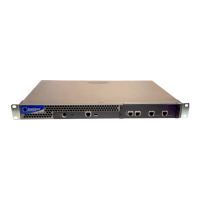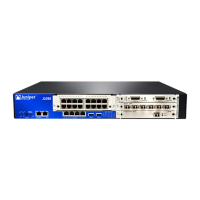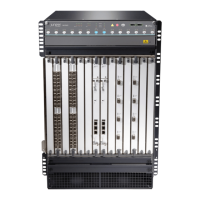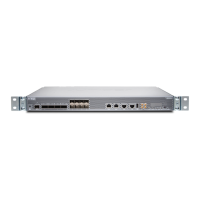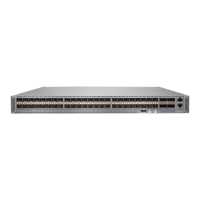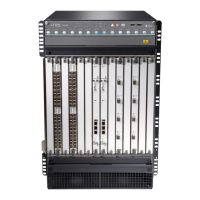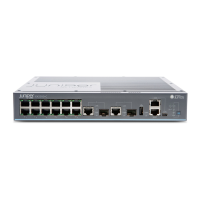Example: Configuring Ethernet LFM Between PE and CE
In this example, LFM is enabled on an IP link between the provider edge (PE) and customer
edge (CE) interfaces. If the link goes down, the fault will be detected by LFM and the
interfaces on both sides will be marked Link-Layer-Down. This results in notifications to
various subsystems (for example, routing) which will take appropriate action.
The link running LFM is shown in Figure 19 on page 138.
Figure 19: Ethernet LFM Between PE and CE
To configure Ethernet LFM on an IP link between PE and CE interfaces:
1.
Configure LFM on the PE router:
[edit]
interfaces ge-1/1/0 {
unit 0 {
family inet {
address 11.11.11.1/24;
}
}
}
protocols {
oam {
ethernet {
link-fault-management {
interface ge-1/1/0 {
pdu-interval 1000;
pdu-threshold 5;
}
}
}
}
}
2.
Configure LFM on the CE router:
[edit]
interfaces ge-1/1/0 {
unit 0 {
family inet {
address 11.11.11.2/24;
}
}
}
protocols {
oam {
ethernet {
Copyright © 2012, Juniper Networks, Inc.138
Junos OS 12.1 MX Series 3D Universal Edge Routers Solutions Guide
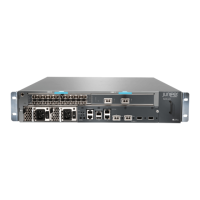
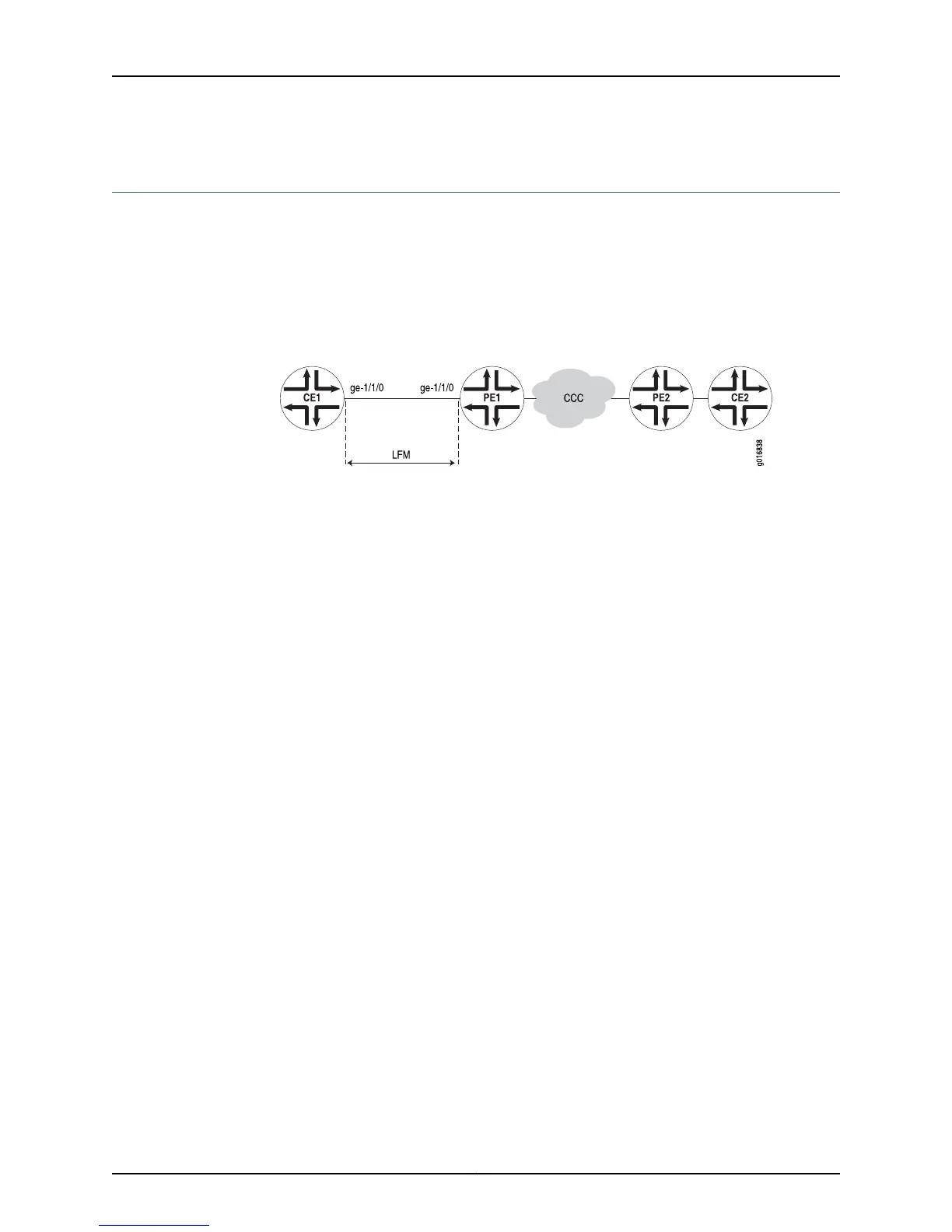